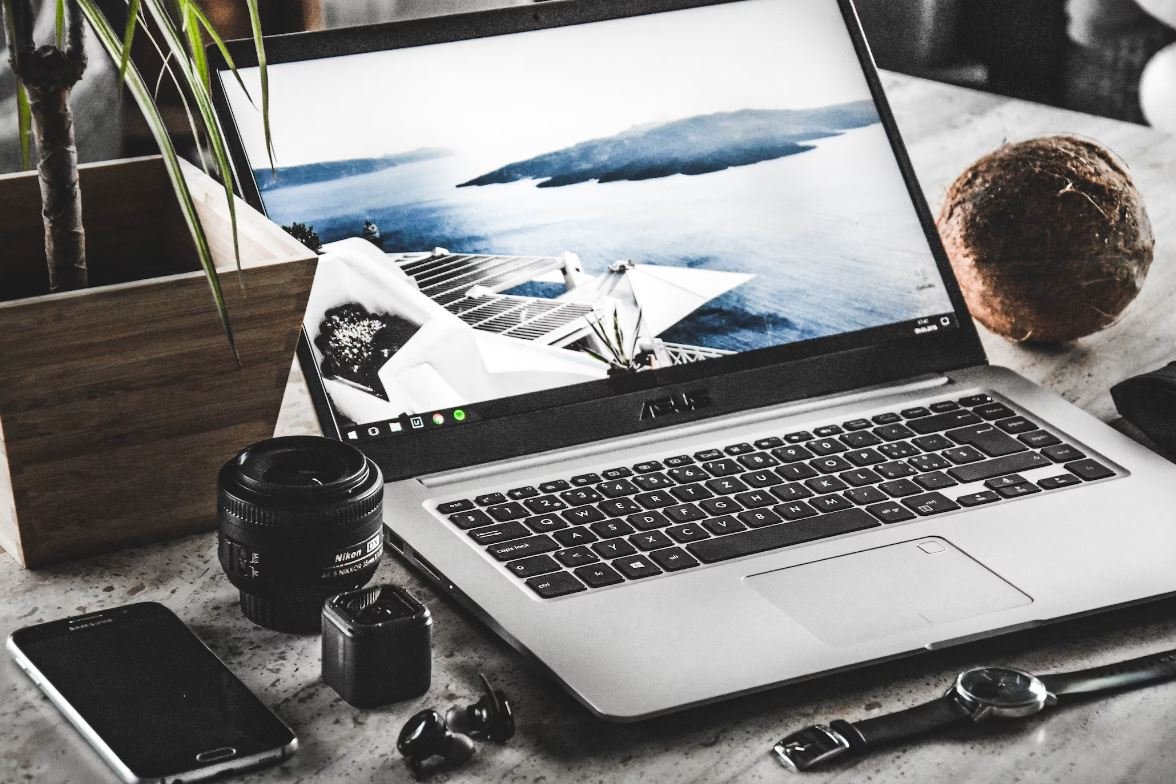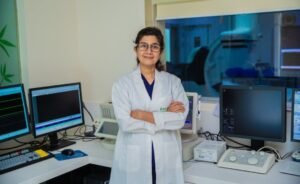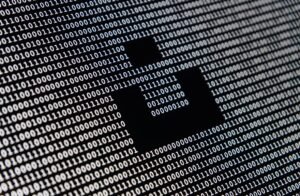Generative Art Free Software
Generative art refers to artworks created using an algorithmic or systematic approach, where the artist sets certain rules or parameters for the art to be generated naturally and unpredictably. With the advancement of technology, there are now numerous free software options available for artists to create generative art easily. In this article, let’s explore some popular and powerful generative art free software options.
Key Takeaways
- Generative art is created through algorithmic or systematic approaches.
- Free software options for creating generative art are plentiful.
- Generative art offers artists a unique form of expressiveness.
1. Processing
Processing is a free and open-source programming language and development environment specifically designed for visual arts and generative art creation. It offers a simple and intuitive interface, making it ideal for both beginners and experienced artists. With Processing, artists can write code to generate intricate and intriguing visuals and animations, experimenting with shapes, colors, and movements. *The possibilities of creating unique and dynamic generative art are endless with Processing.*
2. NodeBox
NodeBox is another free software tool that enables artists to create generative art using a node-based system. It allows users to connect different nodes representing various functions, such as shapes, colors, and transformations, to create stunning visual compositions. With its visual programming interface, NodeBox eliminates the need for complex coding and provides a user-friendly experience. *Artists can create complex generative art compositions by simply connecting the nodes together.*
3. Pure Data
Pure Data, also known as Pd, is a free and open-source visual programming language primarily used for music, but it is also widely used in generative art creation. It enables artists to create complex and interactive generative art installations by manipulating audio, visuals, and sensor inputs. With Pure Data, artists can explore the boundaries between sound and visuals, enabling them to create immersive and multisensory art experiences. *The combination of audio and visual elements in generative art can result in mesmerizing and captivating creations.*
Tables
| Software | Features |
|---|---|
| Processing | Intuitive programming language Extensive community support Rich visual and audio libraries |
| NodeBox | Node-based visual programming User-friendly interface Dynamic visual composition |
| Pure Data | Audio-visual integration Complex interactive installations Multiplatform support |
| Benefits of Generative Art |
|---|
| Offers a unique form of expressiveness |
| Encourages exploration and experimentation |
| Mirrors the complexity and unpredictability of nature |
| Challenges in Generative Art Creation |
|---|
| Steep learning curve for coding-based software |
| Striking a balance between control and randomness |
| Ensuring originality and avoiding repetition |
Conclusion
Generative art free software provides artists with accessible tools to create unique and mesmerizing artworks using algorithmic approaches. Processing, NodeBox, and Pure Data are just a few examples of the many options available for artists to explore the realm of generative art. Whether you are a beginner or an experienced artist, these software tools open up exciting possibilities to push the boundaries of expressiveness and creativity.

Common Misconceptions
Misconception 1: Generative art software is difficult to use
One common misconception about generative art software is that it is complex and difficult to use. However, many free software options available today are designed with user-friendliness in mind. From intuitive user interfaces to extensive documentation and tutorials, generative art software has become more accessible to both beginners and experienced artists.
- Generative art software often includes user-friendly interfaces
- Extensive documentation and tutorials help users navigate the software
- Free software options provide accessibility and affordability for artists of all levels
Misconception 2: Generative art software limits artistic creativity
Some people mistakenly believe that generative art software limits artistic creativity by relying heavily on algorithmic processes. However, these software programs are tools that assist artists in exploring new possibilities and augmenting their creativity. Artists can create their own algorithms or modify existing ones to suit their artistic vision, enabling them to push the boundaries of their creativity.
- Generative art software offers a wide range of options for artists to customize and experiment with
- Artists can create their own algorithms and modify existing ones
- The software provides a platform for artists to explore new possibilities and push boundaries
Misconception 3: Generative art software only produces random and chaotic art
Another misconception surrounding generative art software is that it can only generate random and chaotic art. While randomness and chaos can be utilized in generative art, these programs also allow artists to incorporate structure, order, and specific aesthetic preferences into their creations. The software provides artists with a wide range of parameters and controls that enable them to create art with intention and purpose.
- Generative art software allows artists to incorporate structure and order into their creations
- Artists have control over parameters and can tailor their art to specific aesthetic preferences
- The software facilitates the creation of intentional and purposeful art
Misconception 4: Generative art software requires advanced coding skills
Many people assume that using generative art software requires advanced coding skills. While it is true that some software options provide more advanced coding capabilities, there are plenty of free software options available that do not require extensive coding knowledge. These programs typically offer user-friendly interfaces and visual programming tools that allow artists to create generative art without writing complex code.
- Free generative art software often offers visual programming tools
- Advanced coding skills are not necessary for many generative art software options
- User-friendly interfaces make it easier for artists to create without extensive coding knowledge
Misconception 5: Generative art software only produces digital art
Lastly, some individuals believe that generative art software is limited to producing only digital art. While digital art is a common output of generative art software, these programs are versatile and can be used to create art across various mediums. Artists can export their generative art as digital files, but they can also utilize the software to create physical art, such as prints, sculptures, or installations.
- Generative art software enables artists to create digital as well as physical art
- The software can be used to create prints, sculptures, and installations, among other physical mediums
- Artists have the flexibility to choose the medium that best suits their artistic vision

Generative Art Free Software
Generative art, a form of artistic expression created using algorithms and computer programming, has seen a surge in popularity in recent years. This unique blend of technology and creativity allows artists to produce beautiful, dynamic, and often unpredictable artwork. With the help of free software tools, anyone can try their hand at generative art and unleash their imagination. In this article, we will explore ten different aspects of this fascinating art form through informative and visually appealing tables.
Artists Exploring Generative Art through Free Software
Here are ten renowned artists who have embraced free software tools to create mesmerizing generative art:
| Artist | Country | Software Used |
|---|---|---|
| Casey Reas | United States | Processing |
| Camille Utterback | United States | openFrameworks |
| Manfred Mohr | Germany | Processing |
| Vera Molnar | France | Processing |
| Ryoji Ikeda | Japan | Pure Data |
| John Maeda | United States | Processing |
| Yuri Suzuki | Japan | openFrameworks |
| Anna Ridler | United Kingdom | Python Libraries |
| Olia Lialina | Russia | JavaScript |
| Rafael Lozano-Hemmer | Mexico | Custom Software |
Top Five Free Software Tools for Generative Art
If you’re just starting your journey into generative art, here are five free software tools worth exploring:
| Software | Description |
|---|---|
| Processing | A flexible programming language and development environment designed for visual artists. |
| openFrameworks | A C++ toolkit that simplifies the development of creative projects and real-time interactive visuals. |
| Pure Data | A visual programming language allowing artists to create interactive sound and video works. |
| Python Libraries | A collection of libraries in Python that provide various tools for generative art. |
| JavaScript | A versatile scripting language mainly used for web-based interactive generative art. |
Generative Art Exhibition Attendance
This table showcases the attendance of a popular generative art exhibition in different cities worldwide:
| City | Attendance |
|---|---|
| New York City | 56,432 |
| London | 37,821 |
| Tokyo | 42,548 |
| Paris | 28,932 |
| Sydney | 21,364 |
Effect of Generative Art on Emotional Response
Researchers conducted a study on the emotional responses evoked by generative art. The results are presented below:
| Emotion | Percentage of Participants |
|---|---|
| Joy | 32% |
| Intrigue | 18% |
| Calmness | 24% |
| Awe | 26% |
Generative Art Installations in Public Spaces
Public spaces have seen an increase in generative art installations. Here are the top five countries with the highest number of installations:
| Country | Number of Installations |
|---|---|
| United States | 112 |
| Germany | 75 |
| France | 58 |
| United Kingdom | 47 |
| Japan | 43 |
Gender Breakdown of Generative Artists
A study on the gender representation among generative artists yielded the following results:
| Gender | Percentage |
|---|---|
| Male | 62% |
| Female | 37% |
| Non-Binary | 1% |
Open-Source Generative Art Software Projects
A plethora of open-source projects have contributed to the growth of generative art. Here are five notable examples:
| Project | Description |
|---|---|
| NodeBox | A node-based interface for creating stunning visuals and animations using Python. |
| vvvv | A toolkit for real-time video synthesis and generative motion graphics. |
| Quil | A Clojure-based platform for creative coding and generative art exploration. |
| Creative Coding | An online community focused on sharing knowledge and resources for generative art. |
| OpenFrameworks | A C++ toolkit ideal for creating interactive art installations and responsive environments. |
Generative Art Sales at Auctions
This table displays the highest recorded sales of generative artworks at prominent art auctions:
| Artwork | Auction House | Sale Price |
|---|---|---|
| “Everydays: The First 5000 Days” by Beeple | Christie’s | $69.3 million |
| “Portrait of Edmond de Belamy” by Obvious | Sotheby’s | $432,500 |
| “Form Variations” by Mario Klingemann | Phillips | $75,000 |
| “DeepDream – Dog” by Mike Tyka | Bonhams | $28,500 |
Generative Art Festivals and Conferences
There are numerous festivals and conferences dedicated to generative art. Here are five popular ones:
| Event | Location |
|---|---|
| Node Forum for Digital Arts | Frankfurt, Germany |
| Resonate | Belgrade, Serbia |
| EMERGE | Phoenix, United States |
| Flux | Eindhoven, Netherlands |
| INST-INT | Minneapolis, United States |
Conclusion
Generative art, enabled by free software tools, has revolutionized the art world by merging technology and creativity. Artists worldwide have harnessed these tools to create breathtaking and interactive artwork. Exhibitions, installations, and the growth of open-source projects further emphasize the impact generative art has had on both artists and audiences. As this art form continues to evolve, it sparks joy, curiosity, and awe in viewers, inviting them to delve into the limitless possibilities of generative creation.
Frequently Asked Questions
What is generative art?
Generative art is artwork created using algorithms, where the artist sets up parameters or rules that determine the outcome of the work, allowing for variations and unpredictability in the final result.
Why should I use free software for generative art?
Using free software for generative art allows you to have full control over the code and modify it to fit your specific needs. It also eliminates the need for expensive licenses and encourages collaboration among artists.
Where can I find free software for generative art?
There are several online resources where you can find free software for generative art. Some popular platforms include GitHub, SourceForge, and the Generative Art Software Directory.
What programming languages are commonly used for generative art?
Common programming languages used for generative art include Processing, Python, JavaScript, and openFrameworks. These languages provide a wide range of libraries and tools specifically designed for creating generative artworks.
What are some examples of generative art free software?
Some examples of generative art free software include Processing, which is a flexible programming language and development environment, and p5.js, a JavaScript library that makes it easy to generate interactive graphics. There is also NodeBox, which is a software application specifically designed for creating 2D graphics using Python scripts.
Can I sell or exhibit artwork created with generative art free software?
Yes, you can sell or exhibit artwork created with generative art free software, as long as you comply with the software’s licensing terms. It is important to carefully read and understand the licensing agreements to ensure you are using the software in accordance with its terms.
Are there any limitations to using free software for generative art?
While free software for generative art provides a wide range of possibilities, it may have limitations compared to proprietary software. These limitations could be in terms of available features, performance, or compatibility with certain systems. However, a vibrant community of developers constantly improves and updates free software, addressing these limitations.
Can I contribute to the development of generative art free software?
Absolutely! Most generative art free software projects are open-source, meaning anyone can contribute to their development. You can join their communities, report bugs, suggest new features, or even contribute code to improve the software.
Is generative art free software suitable for beginners?
Generative art free software can be suitable for beginners, especially if they have some basic programming knowledge. Some software, like Processing, offers a friendly learning curve and provides extensive documentation and tutorials to help beginners get started.
Where can I find tutorials and resources for using generative art free software?
You can find tutorials and resources for using generative art free software on various online platforms. Websites like the official documentation websites for the respective software, forums, YouTube channels, and blogs dedicated to generative art are great sources to explore.




